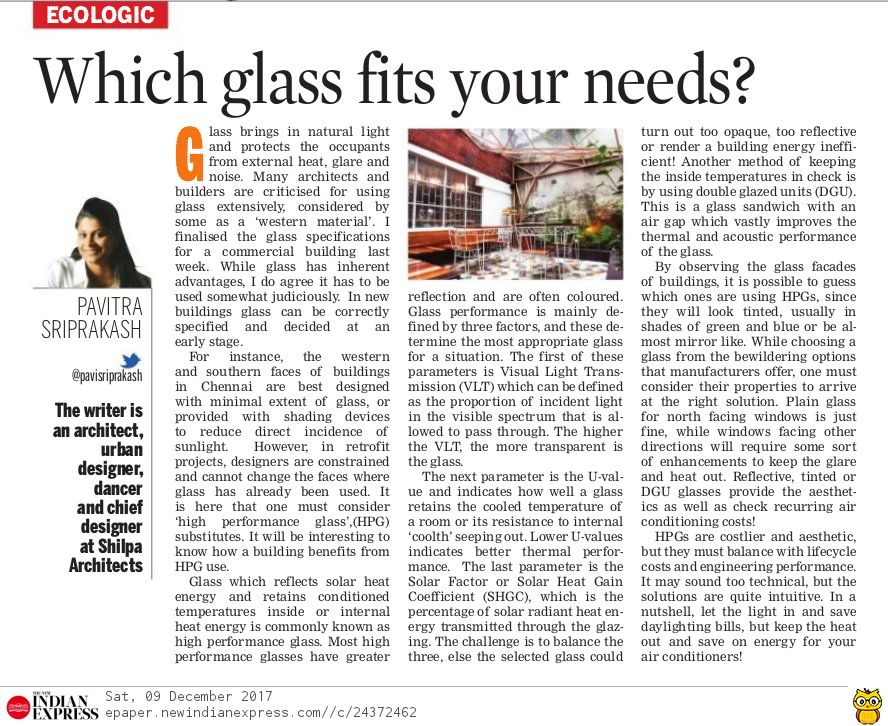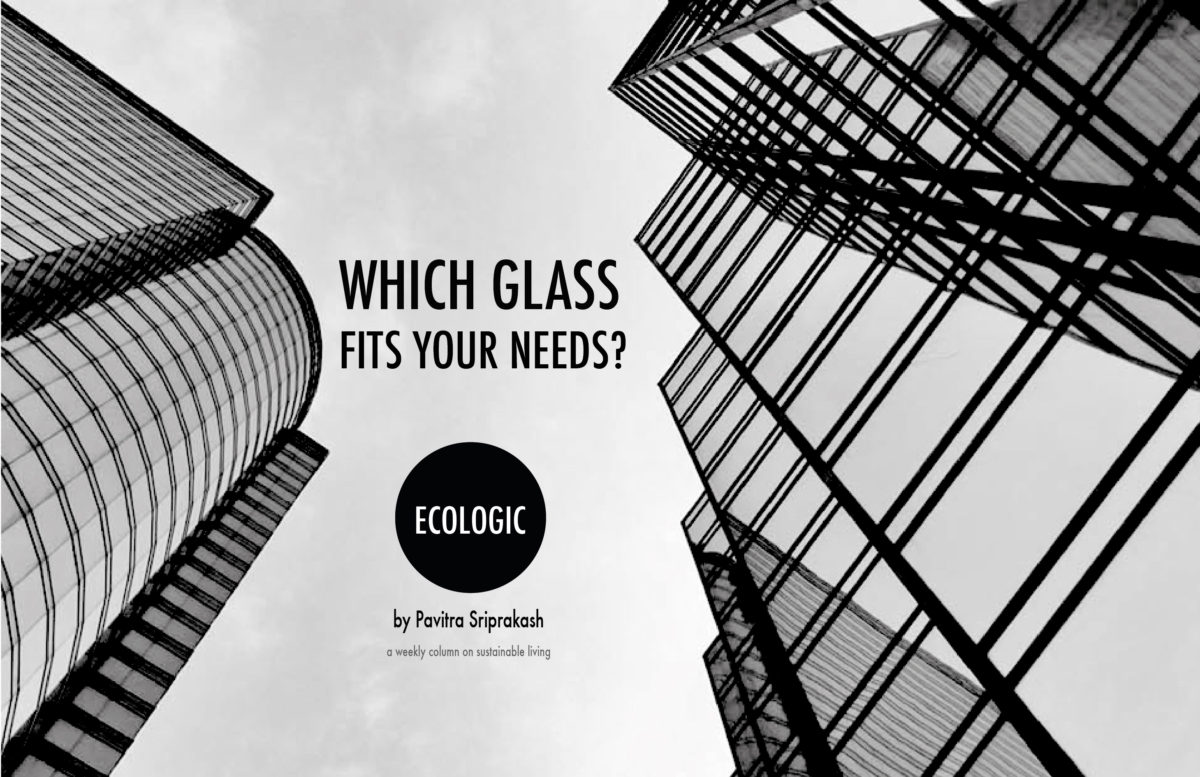December 9th 2017, New Indian Express: ECOLOGIC- Pavitra Sriprakash, the Chief Designer and Director of Shilpa Architects writes on different parameters to consider while selecting glass for a building.
Full Article
Glass brings in natural light and protects the occupants from external heat, glare and noise. Many architects and builders are criticised for using glass extensively, considered by some as a ‘western material’. I finalised the glass specifications for a commercial building last week. While glass has inherent advantages, I do agree it has to be used somewhat judiciously. In new buildings glass can be correctly specified and decided at an early stage.
For instance, the western and southern faces of buildings in Chennai are best designed with minimal extent of glass, or provided with shading devices to reduce direct incidence of sunlight. However, in retrofit projects, designers are constrained and cannot change the faces where glass has already been used. It is here that one must consider ‘high performance glass’,(HPG) substitutes. It will be interesting to know how a building benefits from HPG use.

Glass which reflects solar heat energy and retains conditioned temperatures inside or internal heat energy is commonly known as high performance glass. Most high performance glasses have greater reflection and are often coloured. Glass performance is mainly defined by three factors, and these determine the most appropriate glass for a situation. The first of these parameters is Visual Light Transmission (VLT) which can be defined as the proportion of incident light in the visible spectrum that is allowed to pass through. The higher the VLT, the more transparent is the glass.
The next parameter is the U-value and indicates how well a glass retains the cooled temperature of a room or its resistance to internal ‘coolth’ seping out. Lower U-values indicates better thermal performance. The last parameter is the Solar Factor or Solar Heat Gain Coefficient (SHGC), which is the percentage of solar radiant heat energy transmitted through the glazing. The challenge is to balance the three, else the selected glass could turn out too opaque, too reflective or render a building energy inefficient! Another method of keeping the inside temperatures in check is by using double glazed units (DGU).
This is a glass sandwich with an air gap which vastly improves the thermal and acoustic performance of the glass. By observing the glass facades of buildings, it is possible to guess which ones are using HPGs, since they will look tinted, usually in shades of green and blue or be almost mirror like.
While choosing a glass from the bewildering options that manufacturers offer, one must consider their properties to arrive at the right solution. Plain glass for north facing windows is just fine, while windows facing other directions will require some sort of enhancements to keep the glare and heat out. Reflective, tinted or DGU glasses provide the aesthetics as well as check recurring air conditioning costs!
HPGs are costlier and aesthetic, but they must balance with lifecycle costs and engineering performance. It may sound too technical, but the solutions are quite intuitive. In a nutshell, let the light in and save daylighting bills, but keep the heat out and save on energy for your air conditioners!
About the author

Pavitra Sriprakash (@pavisriprakash), the Director and Chief Designer of Shilpa Architects, is an Architectt, Urban Designer, Dancer and Artist. She writes a weekly sustainability column for The New Indian Express titled ECOLOGIC.



